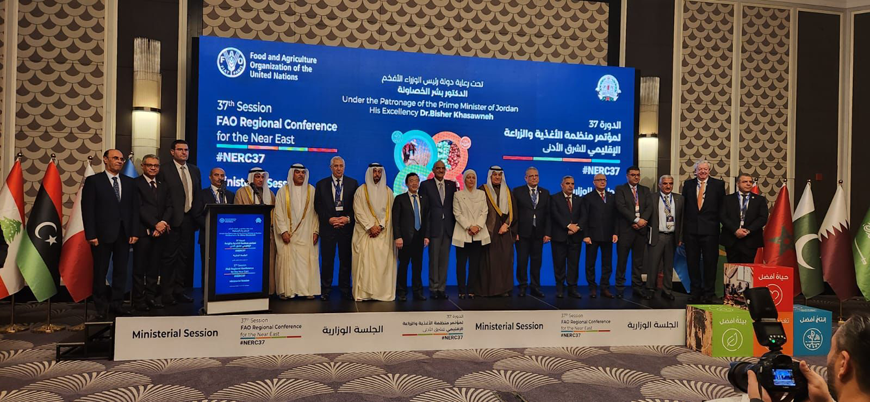You are here
Syrian schools grow edible playgrounds to boost diets of hungry children
By Thomson Reuters Foundation - Aug 29,2017 - Last updated at Aug 29,2017

A Syrian girl cradles a newborn at a camp for displaced people in Shamarekh village, near the northern town of Azaz on the Syrian-Turkish border on Monday (AFP photo)
ROME — School playgrounds across Syria are being transformed into vegetable gardens where children whose diets have been devastated by six years of war can learn to grow — and then eat — aubergines, lettuces, peppers, cabbages and cucumbers.
Traditional Syrian cuisine is typical of the region, and rich in vegetables. Its mainstays include hummus, minced lamb cooked with pine nuts and spices, beautiful and varied salads, stews made with green beans, okra or courgettes and tomatoes, stuffed cabbage leaves and artichoke hearts.
But the six-year war has changed that for much of the population, and many now live mainly on bread or food aid.
According to UN figures, unemployment now stands at more than 50 per cent, and nearly 70 per cent of the population is living in extreme poverty, in what was once a relatively wealthy country.
“The ongoing crisis in Syria is having a devastating effect on the health and nutrition of an entire generation of children,” Adam Yao, the UN Food and Agriculture Organisation’s (FAO) acting representative in Syria, said on Tuesday, ahead of the start of the new school year.
FAO is helping some 17 primary schools in both government and opposition-controlled areas to plant up 500 metre-square fruit and vegetable plots in war-torn areas including Aleppo, Hama, Homs, Idlib and the outskirts of Damascus.
Young children are often the most vulnerable to malnutrition in a crisis, which can have serious and long-lasting effects on their growth and future development.
“Good nutrition is a child’s first defence against common diseases and important for children to be able to lead an active and healthy life,” Yao added.
So far the primary schools, which began planting in May, have produced 12 tonnes of fruit and vegetables. Another 35 schools are expected to start transforming their playgrounds soon in Aleppo and in rural areas around Damascus.
Rising prices, falling production
The price of food has risen since the start of the war — agriculture production has plummeted, and the country now relies on food imports to make up the shortfall. Transporting food around the country has also become difficult and costly.
About 13.5 million people in Syria are in need of humanitarian assistance. Of those, 7 million are unable to meet their basic food needs.
Some 5 million people receive international food aid, but not everyone in need can be reached, and the World Food Programme says it has had to cut the amount of calories in its family food baskets because of funding shortages.
“The donors are generous, but we don’t know how long they can continue to be generous and rely on taxpayer’s money,” the FAO’s Yao told the Thomson Reuters Foundation.
Vulnerable families are receiving help from FAO to grow food at home, so they can become less reliant on food aid.
“Food aid is very important, but... we should combine both, in a way that people grow their own food and move away from food aid gradually,” he said.
In a country where more than half the population has been forced to flee their homes, many moving several times, investing in agriculture helps people to stay put for as long as it is safe, Yao added.
“Agriculture has become a hope for [many] because they can grow their own food and survive — even in the besieged areas.’’
Related Articles
AMMAN— The 37th session of the FAO Regional Ministerial Conference for the Near East, a biennial event organised in collaboration with the M
AMMAN — The Food and Agriculture Organisation of the United Nations (FAO) in partnership with the International Fund for Agricultural Develo
AMMAN — The Food and Agriculture Organisation (FAO) team on Wednesday met with the Water User Association in Al Ghadeer Al Abyad Dam area in

















